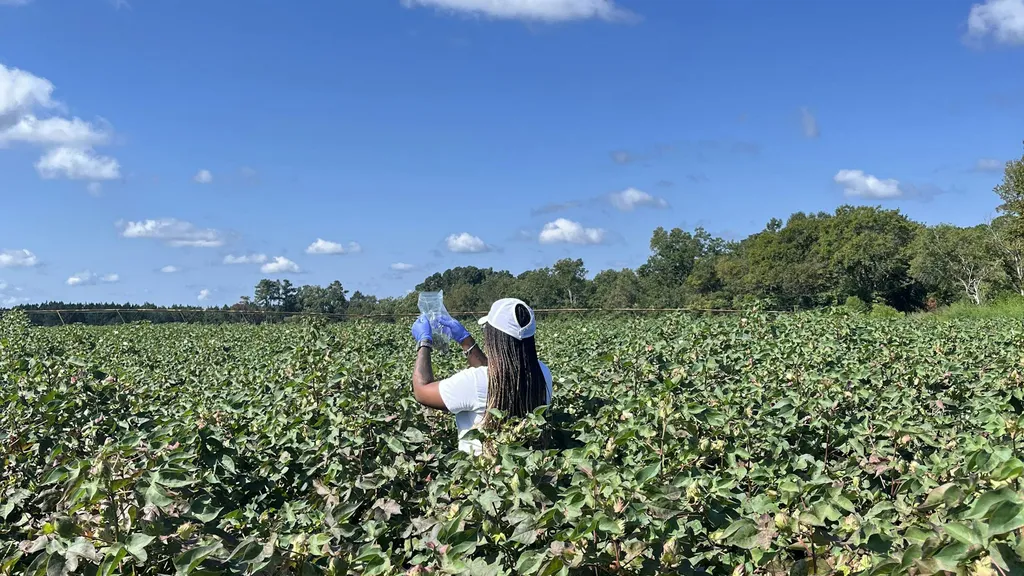In the heart of Georgia, a team of researchers led by Jeevan Adhikari from the Plant Genome Mapping Laboratory at the University of Georgia has pioneered a novel approach to cotton phenotyping that could revolutionize the way we understand and breed perennial plants. Their work, published in the journal ‘Plants, People, Planet’ (which translates to ‘Plants, People, and Our Planet’), combines the power of unmanned aerial vehicles (UAVs) and deep learning to map the complex flowering patterns of cotton, a perennial plant often cultivated as an annual crop.
The study focuses on the season-long flowering trait, a complex characteristic that significantly influences a plant’s adaptation to its environment. By employing high-throughput phenotyping methods, the team was able to track cotton’s productivity over an entire flowering season, identifying genetic factors that confer different reproductive strategies. These strategies range from rapid early maturation, which helps plants avoid environmental stresses, to late maturation, which maximizes productivity by utilizing the full seasonal duration.
“Our approach allows us to capture the dynamic nature of flowering in cotton,” Adhikari explained. “This is crucial for identifying genetic factors that could enhance the plant’s resilience and productivity in various environments.”
The research team’s phenotyping method successfully identified 24 quantitative trait loci (QTLs) that affect flowering behavior in cotton. Notably, five of these QTLs corresponded to previously identified ones from other studies, validating their approach and adding valuable information to breeding decisions. The implications of this work extend beyond cotton, with the potential to improve gains from selection in diverse perennial shrubs and trees essential for sustainable agricultural intensification.
One of the most compelling aspects of this study is its potential to accelerate breeding programs for perennial plants. Traditional phenotyping methods are labor-intensive and time-consuming, often acting as a bottleneck in plant breeding. By automating the process with UAVs and deep learning, Adhikari and his team have demonstrated a more efficient and scalable approach.
“This method could significantly speed up the breeding process,” Adhikari said. “It allows us to make more informed decisions, ultimately leading to more resilient and productive crops.”
The commercial impacts of this research are substantial. By improving the speed and efficacy of breeding programs, farmers and agricultural companies can develop crops better adapted to their specific environments, leading to increased yields and reduced environmental impacts. Moreover, the ability to identify genetic factors influencing flowering behavior can help in developing crops that are more resilient to climate change, a critical factor for the future of agriculture.
The study also highlights the potential for transfer learning, where deep learning models trained on one plant species can be applied to others. This could greatly expand the reach of the technology, benefiting a wide range of perennial plants crucial to agroeconomies and agroecosystems.
As we face the challenges of a changing climate and the need for sustainable agricultural practices, innovations like this are more important than ever. Adhikari’s work offers a glimpse into a future where technology and plant science converge to create more resilient and productive crops, ultimately benefiting farmers, consumers, and the environment alike.

